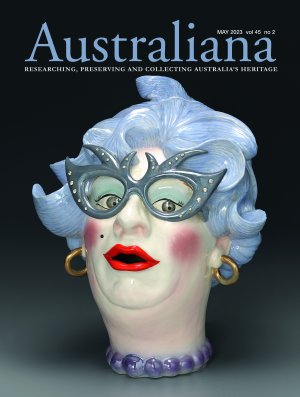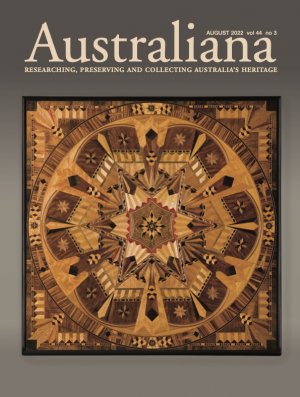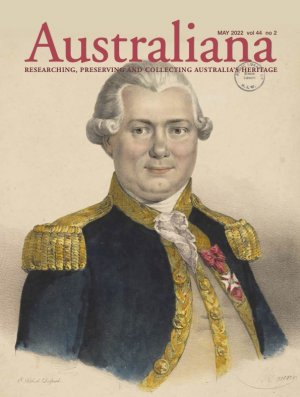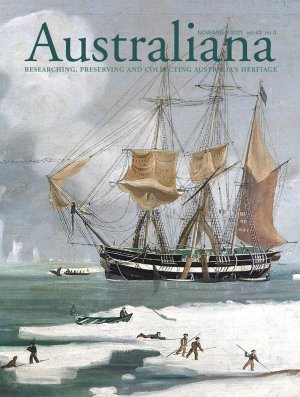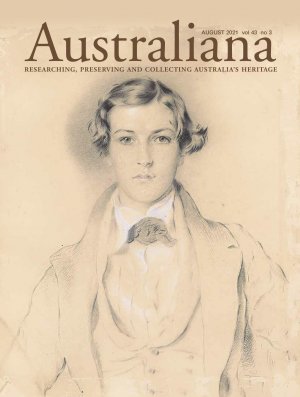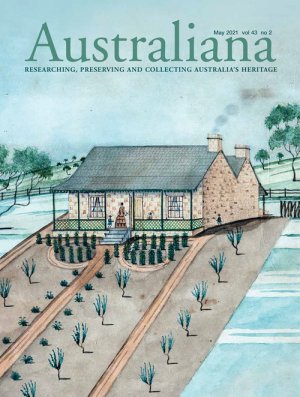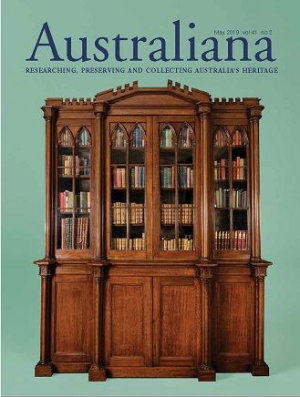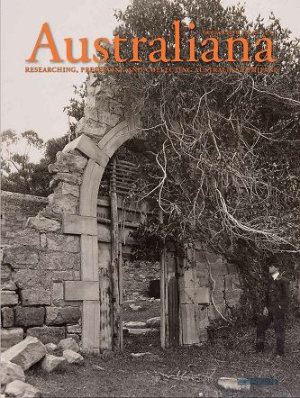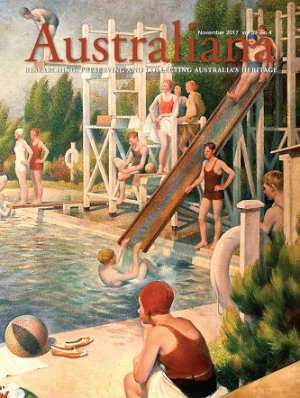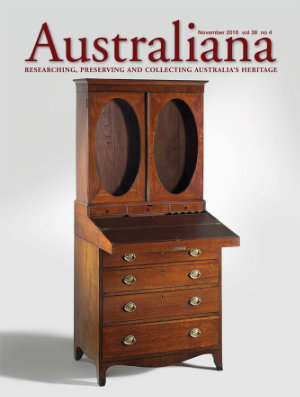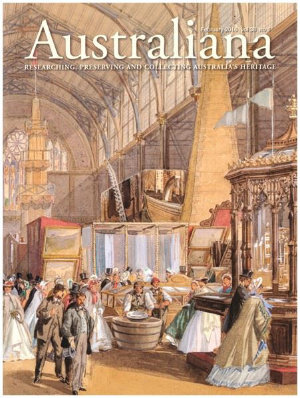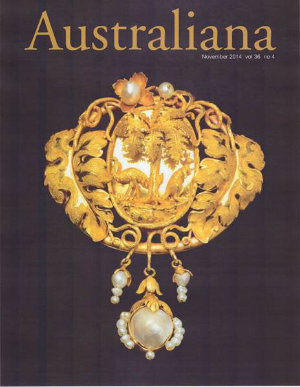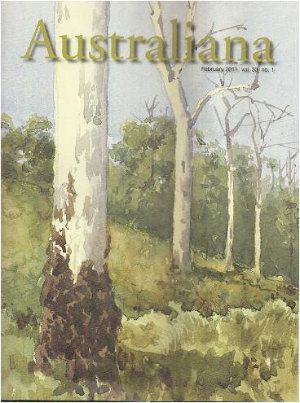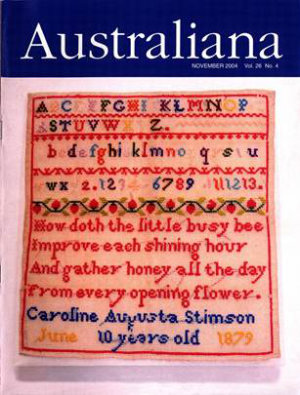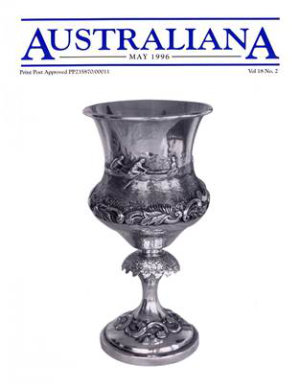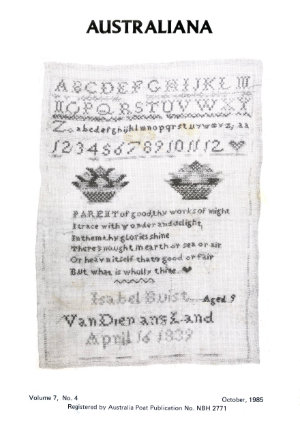Four early Australian silver flatware items – two spoons and two forks – engraved with the three initials ‘WEB’ present a challenge warranting research. Whose engraved initials (WEB) are they and when were the items made and engraved? Christine Erratt offers an answer. Four flatware1items with...
As part of their education in useful arts, schoolgirls sewed their own individual samplers, which are also important indicators of progress in educational methods and reach. The format is fairly standard, with the letters of the alphabet in either or both lower and upper case and basic numbers, plus the gi...
After Albert I King of the Belgians refused safe passage to Kaiser Wilhelm’s troops to attack France, Germany invaded neutral Belgium on 4 August 1914. Britain, bound by an 1839 treaty to support Belgium’s neutrality, declared war on Germany the same day. Australian Prime Minister Joseph Cook offered his go...
John Roy Eldershaw (1892–1973) was a landscape artist who worked primarily in watercolours. During his lifetime, he
was proclaimed to be ‘destined to leave unmistakable footprints in the sands of time’. In 1973 Sir Erik Langker, the arts administrator and influential member of
the Sydney arts establishm...
A sampler, and the von Stieglitz family Bible in which it was kept for many years, were sold at auction in Launceston in 2016. The sampler consists of stitching on a square of linen cloth 6 inches (15.2 cm) in width by 61⁄2 inches (16.5 cm) in length, edged with blue ribbon (plate 1). The stitches used are la...
Melbourne’s International Exhibition of 1880 was a huge event in its day, allowing Victoria to parade the colony’s achievements to the world. The magnificent building designed by Joseph Reed has hosted many important events for Victoria and Australia. Today, with the gardens, it is UNESCO listed as one of t...
When Yvonne Barber first proposed writing an article about William Frederick Ward, your editor’s response was ‘Who?’ Readers will react the same way, yet W F Ward was involved in the engraving, design and manufacture of silverware for 40 years. He designed the arms of the City of Sydney, won the competiti...
Jillian Dwyer unravels the facts surrounding the place of William Lamborn in the triumvirate of Woollett, Wagner and Lamborn as Victorian gold rush jewellers, refines the dates of their operations, maps the emergence of Lamborn & Wagner as “one of the earliest firms of manufacturing jewellers in Australia,”...
Years ago I bought a brass tray with gum leaves on it. I turned it over and saw that the maker had incised on the back “Hand Made R. Head Cremorne”. At the time, the name meant nothing to me. Then I found another one, without a maker’s name, but in the Arts & Crafts style and with similar features: the sa...
... Tamie Fraser was one of the first to realise the same could be done here to reflect our own culture and history. In 1978, she encouraged the establishment of The Australiana Fund (not to be confused with the Australiana Society, established in the same year), with the aim of lending appropriate examples of ...
How do three spoons, two by Sydney silversmith Alexander Dick and a later spoon made in London, come to bear the same crest and initials? Lesley Garrett explores the possibilities.
Samuel Thomas Gill died melodramatically, aged 62, on the steps on the Melbourne Post Office at half past four on Wednesday 27 October 1880. A policeman recorded that he “was in a most filthy state and covered with vermin” while a search of the pockets found pills which identified him. An autopsy revealed t...
Jewellers William Lamborn, Leopold Wagner and Samuel Woollett all arrived at Melbourne in the first few years after the discovery of gold in Victoria in 1851. Recent research has uncovered new information on these jewellers and their firms – Wagner & Woollett, Lamborn & Wagner and Woollett & Hewitt. The new i...
